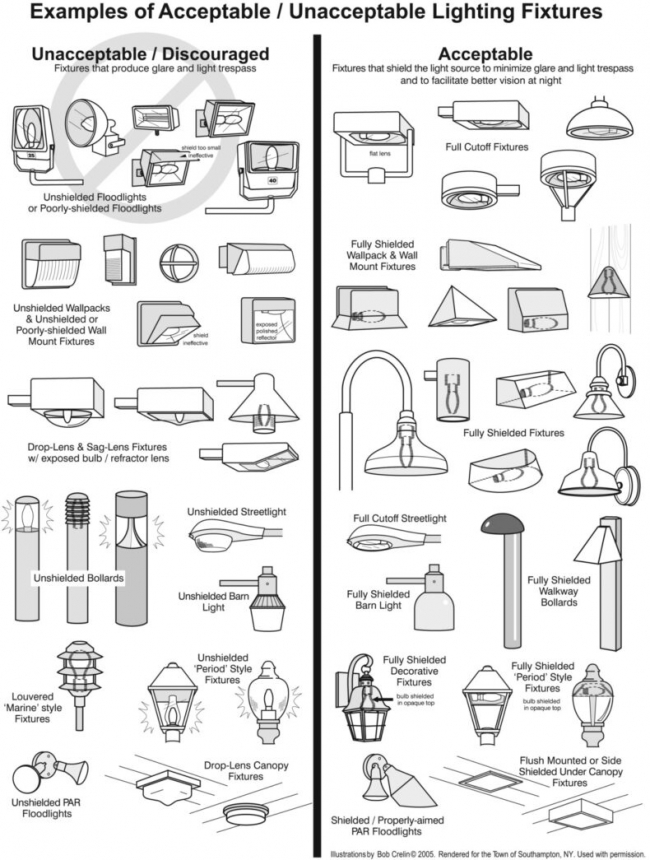Outdoor Lighting

Deschutes County has maintained regulations for outdoor lighting since 1994, which address outdoor lighting in the rural, unincorporated County (cities within Deschutes County each have their own lighting standards). The Board of County Commissioners recently engaged the public in a process to update these rules. Please scroll to the bottom of the page for a PDF of the new regulations. The new regulations were adopted on September 24, 2025 and will become effective on December 23, 2025.
Outdoor lighting regulations aim to minimize light pollution in the rural County, which not only affects residents and neighbors, but also wildlife, health, and viewing of natural vistas, while recognizing the need for responsible, safe lighting for residents, visitors, and businesses. For more information about light pollution and responsible outdoor lighting, visit DarkSky Oregon.
What’s Changing?
The 1994 regulations had shielding standards based on bulb type and wattage, as well as a list of exemptions. The new regulations simplify these rules, requiring three basic criteria for non-exempt light fixtures:

Light fixtures must be downcast
"Downcast" means lighting that is installed such that light rays from an outdoor light fixture are directed downward toward the ground and which includes a fixture shield parallel with the level ground.
Light fixtures must be fully shielded
"Fully shielded" means outdoor light fixtures that are shielded or constructed so that light rays emitted by the fixture are projected below the horizontal plane. Please refer to the diagram to the right for examples of fully shielded light fixtures and examples of non-compliant fixtures that are not shielded or partially shielded.
Light trespass is prohibited
"Light trespass" means a condition in which light emitted by a light fixture illuminates any area beyond the property lines of the property on which the fixture is installed. “Light Trespass” exists when a person is able to see direct illumination from an off-site light fixture. Light trespass does not include indirect reflection or scattering of light from mounting hardware or any other surfaces.
Holiday Lighting
Seasonal holiday lighting from the day after Thanksgiving to January 15 is exempt. Other event-specific lighting for no more than fourteen cumulative days in a single calendar year also is exempt.
String Lighting
String lighting was previously unregulated but has recently been the subject of a growing number of complaints.
String lights:
-
Shall not be used to solely illuminate or decorate landscaping features, walls, or fences.
-
Cannot flash or flicker.
-
Non-residential uses: string lights may be installed in outdoor dining and entertainment areas only and shall not be used to delineate or outline the edges of a building or for any other purpose. String lighting must be completely extinguished by the end of normal business hours.
-
Residential uses: string lighting may be used to delineate or outline the edges of patios, porches, decks and similar structures. String lighting must be completely extinguished by 11 P.M.
-
These limitations do not apply to string lights used as holiday lighting, which are instead subject to holiday lighting standards.
Exemptions
Certain fixtures are exempt from the regulations (see regulations for full list), including:
- Airport operations
- Special events up to 10 days
- US flags displayed by top mounted lighting
- Internally lit advertising signs
- Farming and forest practices
- Bottom-mounted fixtures on externally lighted billboards, with special shielding requirements
- Construction lighting
- Recreational facilities for sports/recreation until 11:00 PM
Compliance
All replacement outdoor lighting fixtures installed on or after December 23, 2025, must comply with the outdoor lighting ordinance.
All other fixtures must comply with the ordinance by December 23, 2028.
